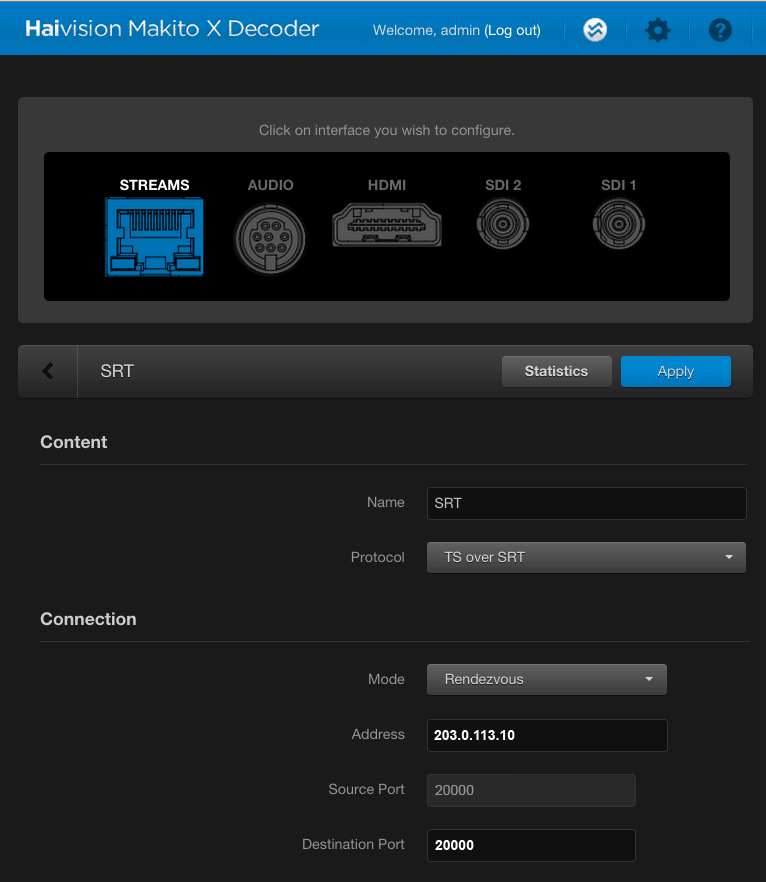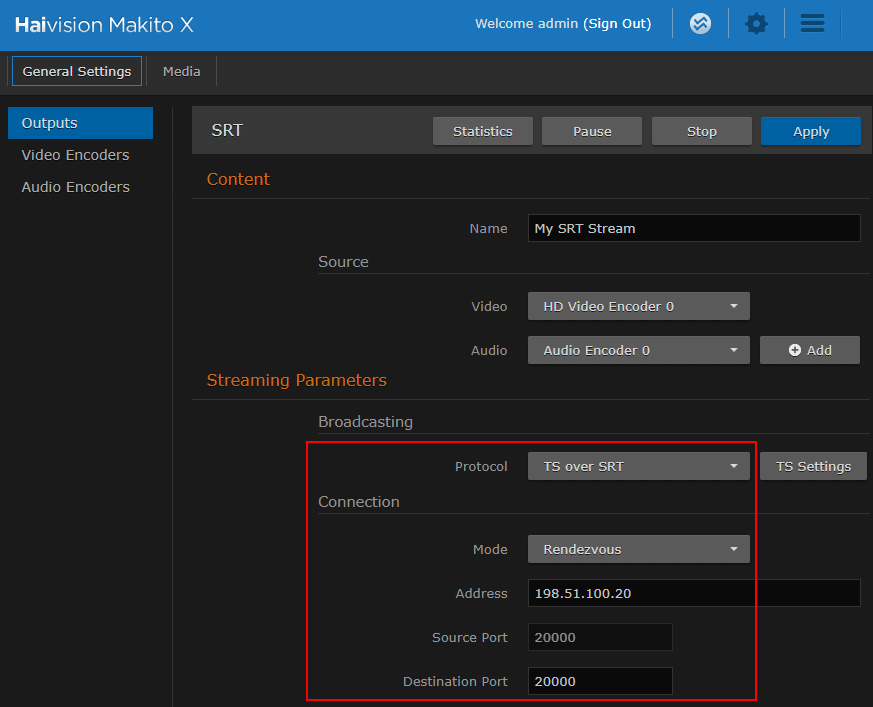Scenario 3: Internet streaming using Rendezvous mode
In this scenario, a Makito X Encoder in Rendezvous mode behind a firewall and a Makito X Decoder, also in Rendezvous mode and behind a firewall, mutually establish a point-to- point SRT streaming session over the Internet.
Step 1 – Configure the Makito X Encoder
Using the settings in the table below, create and start an Output Stream on the Makito X Encoder (the SRT source device):
| Setting | Example | Description |
|---|---|---|
| Protocol | TS over SRT | SRT is based on the UDP protocol. |
| Mode | Rendezvous | Makito X Encoder attempts to initiate SRT session, and listens for incoming SRT connection requests. |
| Address | 198.51.100.20 | This is the target address for the SRT stream, which is the public IP address of the firewall at the destination. |
| Source Port | 20000 | For Rendezvous mode, source and destination ports are the same. |
| Destination Port | 20000 | This is the port over which the Makito X Decoder will be listening. |
Step 2 – Configure the firewall(s)
Make sure that the firewalls between the source and destination devices have port rewriting turned off (i.e. static port mapping must be allowed). In this scenario, for example, this is necessary to allow the Makito X Encoder and Decoder to establish an SRT session over port 20000.
Step 3 – Configure the Makito X Decoder
On the Makito X Decoder (the SRT destination device), do the following:
Using the settings in the table below, create an input stream:
| Setting | Example | Description |
|---|---|---|
| Protocol | TS over SRT | SRT is based on the UDP protocol. |
| Mode | Rendezvous | Makito X Decoder will attempt to initiate the SRT session, and listen for incoming SRT connection requests. |
| Address | 203.0.113.10 | This is the public IP address of the firewall at the source. |
| Source Port | 20000 | In Rendezvous mode, the source port must be the same as the destination port. |
| Destination Port | 20000 | The port on which the Makito X Encoder will be listening. |

Once all settings have been applied, the Makito X Encoder and Decoder will handshake and establish an SRT session. The encoder will send the video stream to the decoder, which will process the stream and return control packets that include network throughput, latency and other statistics. The encoder can use this information to adapt its transmission (resend lost packets, adjust bit rate, etc.).


